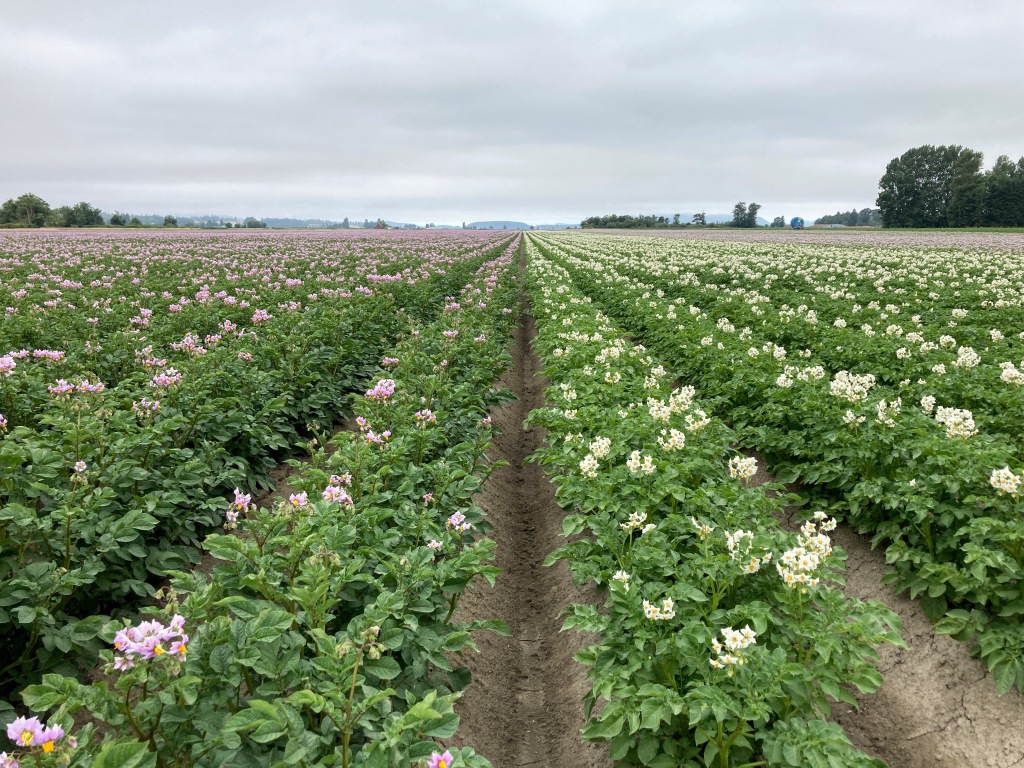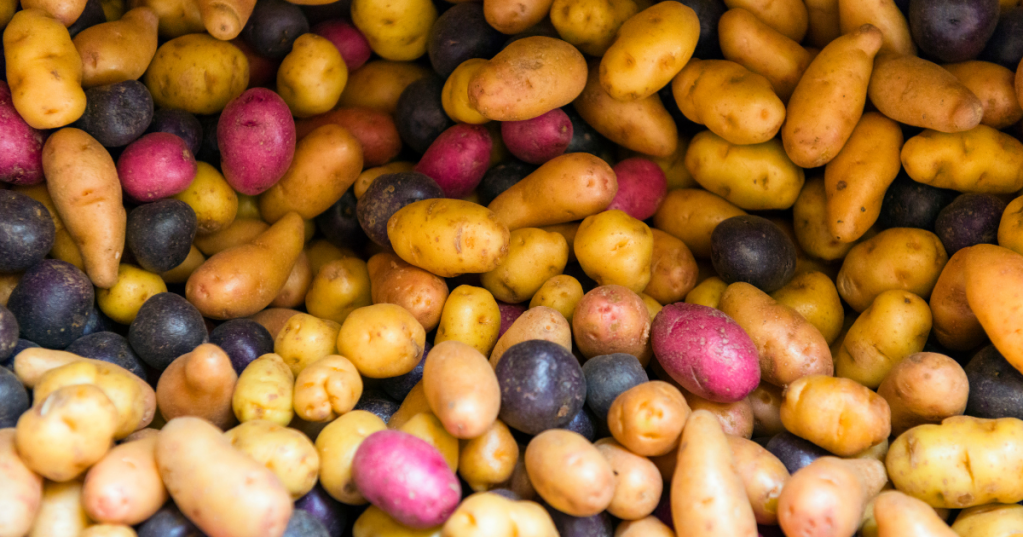This is actually a really good question. Traditional potato growing and harvesting is completely built around turning over soil. The hills are built and the potatoes planted and actual harvest is built around lfting the hill and shaking out the soil.
in fact the best first crop to put down on newly turned over land is hte potato for this exacxt reason. The next crop can be your enture garden. The fact is that the majority of garden plants need clean soil in order to prosper and when that is not possible, we now use plastic sheeting to induce that sterilization.
Plastic sheeting may be an option but once again the harvesting problem calls for lifting and shaking the whole bed and this will also still disturb the soil. If you must disturb the soil on harvest it is actually better to also disturb it all in the first place to make the harvest work.
Potatos are really a garden crop rather than a fieod crop. That strongly suggests thinking in terms of garden rotation.
.
How can we improve soil health in potato cropping systems?
efhttps://soilsmatter.wordpress.com/2022/08/01/how-can-we-improve-soil-health-in-potato-cropping-systems/
Minimizing soil disturbance is one of the key tenets promoted to build soil health in agricultural systems. Many farmers across the county have adopted reduced and no-till systems to build soil carbon, a central component to healthy soils. But what if you grow a crop where the part you sell is underground – like potatoes? What are some options to build soil health in those systems?
In the US, overall, the potato industry was a $4 billion industry in 2020. Americans will eat their potatoes fresh, frozen, fried, chipped, canned, dehydrated. Potato products are also used as food ingredients, like potato starch.
Potato plants blooming in a field in northwestern Washington. Researchers are looking at ways to grow potatoes with less soil disturbance, which can improve soil health. Credit: Deirdre Griffin LaHue
Potatoes are a valuable crop in Washington state. We are the second leading producer of potatoes in the United States (after neighboring Idaho.) Central Washington grows Russet potatoes primarily for French fries and other processed potato products. Northwestern Washington is known for colorful, fresh-market potatoes.
The potato industry in Washington recognizes the importance of healthy soils for long-term, sustainable production of the crop. One issue with growing potatoes: they are a tuber crop, growing belowground. Thus, planting and harvesting them disturbs the soil more than a crop like wheat or barley, which are harvested aboveground. Growers and researchers are working on strategies to promote soil health in this typically high disturbance system.
Aerial image of the long-term agricultural experiment to improve soil health in northwestern Washington’s potato-based cropping systems. The research team is looking at the feasibility and benefits of using cover crops to improve soil health. Credit: Kwabena Sarpong
Through Washington’s new Soil Health Initiative, my team and collaborators recently set up a long-term rotational experiment to explore some of these strategies in potato-based systems. The strategies represent the typical rotations and soils of the area. The trial is designed with methods that use changing levels of:soil disturbance (i.e., tillage),
organic matter inputs,
internal (cover crops and residues) and,
external (compost).
This allows us to study multiple soil health principles and how they interact with one another.
Potatoes in northwestern Washington are typically grown in a particular field every 3-5 years. Soil improvement strategies are really focused on what happens before and after the potato crop.
A three-year cover crop of a grass-clover mixture will be mowed periodically with no other disturbance. Farmers in Washington state typically grow potatoes every 3 to 5 years. Credit: Deirdre Griffin LaHue
One practice many growers are experimenting with is cover cropping. Cover crops are grown between cash crops to provide agroecosystem benefits related to 3 of the 4 main soil health principles: cover the soil, increase diversity, and maximize continuous living roots, which help feed microorganisms in the soil.
Farmers in the area are using two methods. One is winter cover crops, planted in fall and terminated in spring. The other is multi-year cover crops that are mowed and continuously provide organic carbon inputs to the soil.
Our cold, wet fall and spring seasons can be a challenge to establishing winter cover crops. This is due to harvesting potatoes through October. But having cover crops between all other rotational crops may still benefit the soil.
Northwestern Washington is known for colorful, fresh-market potatoes. Growing potatoes in a cover cropping system may help the environment – and increase yields. Credit: Canva Pro
The multi-year cover crop likely provides more soil benefits, but farmers are then missing out on several years of growing a cash crop. Our experiment looks at both cover crop strategies and their effects on soil properties, crop yields, ecosystem benefits, and farm economics.
We are also studying potato-growing systems that reduce soil disturbance. We’re looking at whether it’s both feasible and beneficial to rotate in wheat or barley planted with no-till seeders. Minimizing soil disturbance between potato crops could improve soil health and future potato yields.
Ultimately, we need to take a systems approach to improving soil health with potatoes and with any crop. It is not just about one crop. It’s about how the whole cropping system is managed over time. By finding those intervention points to introduce a soil-building practice, we can steadily improve soil health even with underground crops.




No comments:
Post a Comment